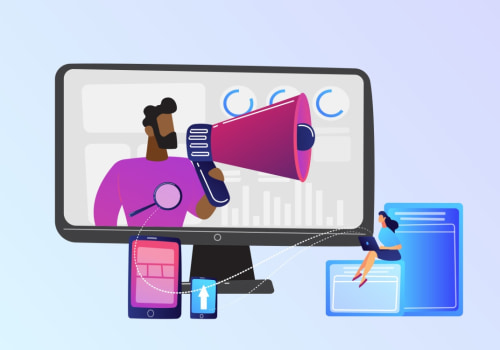Nowadays, the most popular types of marketing channels are websites, email, targeted digital advertising and events (digital or in-person). In the past, people used to use a direct distribution channel (such as emails) or an indirect marketing channel (such as television). Companies use different media (content, messages, advertisements) to reach their audience where they hang out (for example,. They can use a selection of channels or all available channels.
Organic search refers to the unpaid search results of a search engine. Organic search is one of the pillars of the entire Internet. In total, 68% of online experiences start with a search engine (BrightEdge). Social media platforms are used to attract brand followers and other users through organic reach or by paying to reach a defined audience.
Social networks aren't just Facebook, Twitter or LinkedIn. Applications that only use messaging, such as Discord, Slack and WhatsApp, also belong to the same channel category. Do social media users “consume branded content”? Surprisingly, 90% of people on Instagram follow a company (Instagram). It's a combination of product marketing, public relations, and customer support. Social networks aren't just Facebook, Twitter or LinkedIn. Applications that only use messaging, such as Discord, Slack and WhatsApp, also belong to the same channel category. Do social media users “consume branded content”? Surprisingly, 90% of people on Instagram follow a company (Instagram). It's a combination of product marketing, public relations, and customer support.
Trying to summarize it is like trying to summarize all the conversations in the world. Every brand on social media tends to develop its own voice while publishing a balanced combination of product marketing, conversations, entertainment and company news. Tomorrow is the longest day of the year, which means it's the perfect day to get out and launch a coordinated 17-hour attack against the Sun. Who supports me? Advertising means that paid media outlets have access to your audience to show your message close to or instead of normal content.
Digital advertising is the same idea that was transplanted to the Internet (also known as paid traffic or means of payment). Although content marketing seems to be the perfect alternative, most B2B and B2C marketers use paid content distribution (67% and 78%, respectively). Why pay for ads when there are free traffic channels, such as search and social media? Especially when the ads have such a bad reputation? Email marketing allows you to reach the mailboxes of your potential customers with messages that incite direct action or aim to create a long-term relationship with the brand. Conversational marketing refers to engaging in conversations in real time with current and potential customers through live chats, chatbots, messaging apps and social media.
The products mentioned in this article alone can get a share of that organic traffic of more than 10,000 (and other sources of traffic as well). That said, it's common to focus on one channel or a small set of channels. For example, at Ahrefs, we focus on organic search and video marketing because those channels can serve the entire marketing funnel. This has proven to be an effective way to reach our audience.
B2B and B2C brands invest in the same channels (according to HubSpot). However, the way they use the channels may differ. B2C brands often use these channels to provide entertainment and directly impact sales. B2B brands focus more on educating potential customers and establishing lasting relationships.
These types of brands can also find some types of content or platforms that are more suitable for them. For example, B2C brands don't usually publish case studies, and B2B brands consider LinkedIn to be more effective. Content marketing is an approach focused on constantly developing and distributing valuable content: blog posts, videos, infographics, e-books, case studies, interviews, technical documents, etc. The goal of content marketing is to encourage potential customers or customers to take an action that is profitable for their organization.
This widespread use of email is why email marketing is such a powerful way to interact with people who have shown interest in your product, service, website, or brand. Email marketing uses email to develop relationships with current and potential customers. The marketing channel includes a combination of people, organizations and activities that allow the company to bring its product or service to the market. Often, this combination includes retailers, agents, wholesalers, brokers, transportation companies, and others.
If you're thinking about making email marketing a priority, Alex suggests that you focus on contacting people in the consideration phase, rather than trying to recover abandoned carts. Giving priority to people who are still thinking about making a purchase will allow you to get more out of your investment than contacting someone who has already left. Whether you're just starting out or are dreaming of your next big campaign, this email marketing guide will provide you with information and ideas to help your business grow. Sending people a physical item by mail is called direct mail marketing.
Direct mail may vary in style and scope. Some direct mail campaigns include a postcard with a coupon code, others may announce a new product or a sale. Many brands still choose to send full catalogs. Paying to show ads on social media platforms such as Instagram, Facebook or TikTok can help you grow your business by attracting a flow of visitors to your website.
However, paid ads, also known as display advertising, come with their own risks. Paid advertising costs have skyrocketed in recent years, and you'll have to pay to play over and over again. While paid ads may work well for your business, they're not as stable as organic forms of traffic, which grow more steadily over time. Instead, consider using paid content to demonstrate the concept of a new business idea.
Publishing content on different social media platforms such as TikTok, Instagram or Facebook is called social media marketing. Unlike display or paid advertising, posting content on your own social media channels is a form of organic marketing, since you don't pay for views. Social media marketing can be a great way to find, interact and build relationships with the communities that will buy your products and defend your brand. Establishing a social media presence can help you increase your number of followers, work with influencers through influencer marketing to expand your reach, and sell products directly within the platform.
For example, Omsom, a food brand that specializes in sauces and meal kits from Southeast and East Asia, uses a blog to share stories about different dishes and recipes, as well as profiles of culinary trendsetters. For Omsom, content marketing is a key part of a combination of channels that also includes social media and email marketing. This means that the team can publish their content between Instagram, TikTok, their blog and their emails, creating a rich and consistent flow of fun and interesting videos and reads. There isn't one marketing channel or list of marketing channels that works for every business, but it's always a good idea to rely on multiple marketing channels.
Influencer marketing is the use of influencers (people with a dedicated following on social media) to mention or promote your product or service to their followers. Next, with Alex's help, we'll share what a marketing channel is, examples of different channels, and a framework for choosing the most suitable ones for your company. Affiliate marketing is where people earn money through commissions when they advertise a product or service on their website. Unlike organic SEO, paid search engine marketing means that you'll top all other organic results with the same search term.
Well, it's probably one of the most effective marketing channels because people tend to trust other people more than brands. In the Internet age, it's easy to dismiss offline advertising as a viable marketing or sales channel. The market in which a company operates also has a major impact on the choice of marketing channels. The financial resources and objectives of the company are also important factors that come into play when deciding on marketing channels.
The combination of marketing channels you choose helps form your company's overall marketing strategy. Associative marketing involves working collaboratively with a different company to capture the attention of that company's audience. Word-of-mouth marketing (WoMM) is the process of influencing and encouraging natural discussions about a product, service or company. Regular customers, on the other hand, are a slightly more well-known entity, Alex says, and you can take a look at the types of marketing activities that have brought them back over time.
For example, if a company has limited financial resources, it may not be able to afford to establish its own distribution network and instead have to rely on other intermediaries to reach its target market. . .








